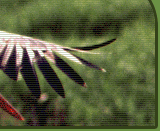| Protected nature area since 1977 Area 1977 802 ha; 1999 - 6636 ha Protection status - Nature Reserve
- Important Bird area (IBA National code LV016) 6475 ha
- Natura 2000 site (LV0518900)
Importance in national and EU level Habitats 7110*, 7140, 7120, 91D0*, 9080*, 9010*, 3130, 3160 (* priority habitat of EU Habitat Directive Annex I). Stikli Mires is the largest raised bog complex in the Western Latvia which includes 5 raised bogs and 7 lakes. The active raised bogs have the hummock-hollow complex and the bog pool labyrinth, these habitats are valuable for the great number of bird species of national and EU importance. Flora Protected species of vascular plant species and bryophytes: Cypripedium calceolus*, Trichophorum cespitosum, Lycopodiella inundata, Cardamine flexuosa and others. For some species for e.g. Sphagnum lindbergii Stikli Mires Nature Reserve is one of few locations in Latvia. (* - species of EU Habitat Directive Annex II). Fauna Stikli Mires Nature Reserve holds about 30 protected bird species of national and EU importance, for example: Aquila pomarina, Crex crex, Cygnus cygnus, Grus grus, Pluvialis apricaria, Tringa glareola, Glaucidium passerinum, Picoides tridactylus, Picus canus, Pandion haliaetus and others. The site holds 5 Tetrao urogallus leks. Stikli Mires is considered as important resting and overnight site for the migrating Anser fabalis, Anser albifrons and Grus grus species. There is information about 6 rare invertebrate species of Latvia and 3 mammal species of EU importance: Canis lupus, Castor fiber, Lynx lynx. Main threats Drainage ditches in Vasenieku Mire still damage the mire hydrological regime as the water level has been lowered. This has resulted in the degradation of the raised bog habitats. The drainage ditches in Vasenieku Mire are even up to 3 m deep and the length of ditches reaches 12 km. Planned actions and results: - Elaboration of management plan.
- Preparation of technical designs for building dams.
- Building of dams with the aim to stop degradation of the raised bog habitats.
- Preparation of technical designs for the construction of nature trail in the bog and for building nature tower.
- Building of nature trail in the bog.
- Building of watching tower in the bog.
- Management of forest habitats valuable for Tetrao urogallus.
- Preparation of booklet about the site.
- Establishment and installation of information boards and signs.
- Monitoring of the influence of management actions.
Management plan for Stikli Mire Pictures from the Stikli Mires Back to the main project site | 







